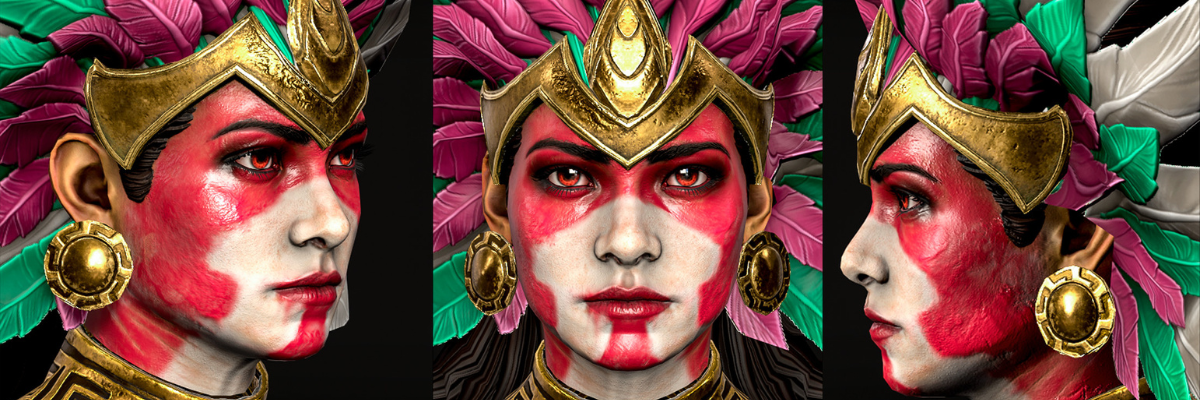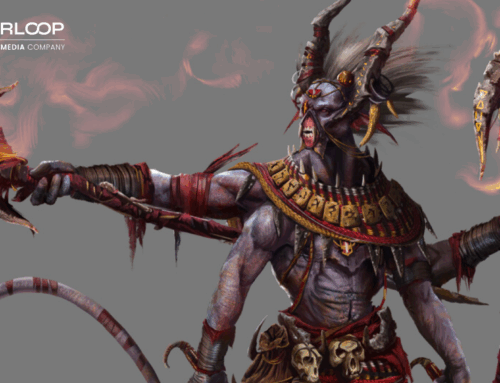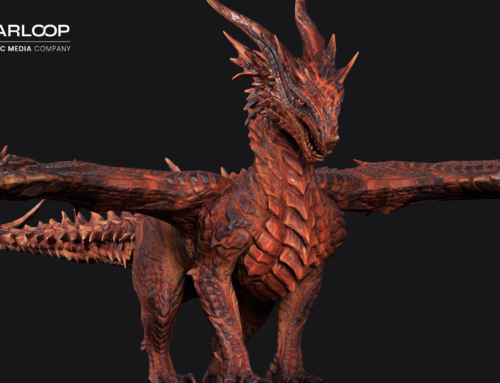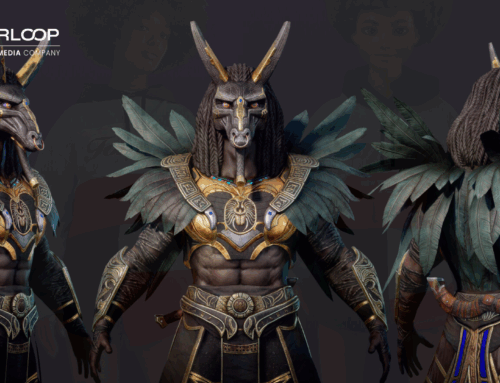What makes great video game characters?
Character design in video games is more than just creating cool-looking heroes and villains. It’s a critical part of player experience, blending visual storytelling, narrative depth, and game mechanics into memorable, emotionally resonant characters. From epic RPGs to fast-paced shooters, the way characters are designed directly shapes how players engage with a game world.
The teamwork behind great character design
As in all stages of video game development, teamwork is the key to crafting great characters. Game designers and writers begin by building a character’s backstory, motivations, and personality. These narrative elements set the foundation. Next, character concept artists bring the idea to life, crafting initial sketches and developing digital art assets that reflect the story and game mechanics.
The evolution of video game characters
It wasn’t long ago that video game characters appeared as pixelated figures with limited animation. But with rapid advancements in technology—especially in recent years—today’s characters are more dynamic, expressive, and realistic than ever. From 2D sprites to fully rendered 3D heroes, character design now plays a powerful role in inspiring emotional responses from players.
What is character design in a video game?
The characters design is a phase in video game production, through which a game designer creates the entire concept, style, and artwork of a character from scratch. The process is very complex, and usually begins with the artist analysing the character’s personality traits in order to bring him to life. Character design can heavily differ between 2D games and 3D games, as each type of character has specific design requirements and characteristic needs. For example, 2D animation is still considered the more traditional style, whereas /”>3D characters are more dynamic and express better movement in video games.
Character design is one of the most important aspects for a video game development company. Those who do this job must have talent, intuition, a set of developed skills, and a high level of creativity. Through their work with video game characters, game artists must ensure the characters simultaneously belong to the game’s fantasy world. Artists must establish a unique personality and a visual aspect that expresses their characters physical attributes.
The design process for video game characters includes many elements within the drawing process involving the principles, the theory, and the execution. Through character design, the creative team has to lead the game’s story to a recognizable interaction between players and the video game. This has the role of generating emotions and immersion. At the same time, the characters must be attractive, and the players must identify with them. Finally, in development and game design, the team needs to know who the final player is, in what context the characters will be used, and what technology is available to create first-rate characters.
What types and classes of video game characters are there?
Something which has caught the minds and hearts of players is Role-Playing Games. Every individual has their own unique personality, and with video games, players can choose a character to match their particular traits. Some of the standard RPG classes are:
- Fighter / Soldier / Warrior
- Assassin / Ninja
- Mage / Wizard
- Archer / Hunter / Ranger
- Berserker
- Cleric / Priest / Enchanter
- Necromancer / Shadowknight
- Summoner
- Dancer / Bard
- Dragoon / Lancer
- Blue Mage / Jack-of-all-Trades
How game genre influences character design
Video game genres are usually defined by the way the player interacts with the game. For example, a first-person shooter remains a first-person shooter regardless of whether the medium is science fiction, western, fantasy, or military. The most popular video game genres are action, adventure, role-playing, simulation, strategy, massively multiplayer online games (MMO), and sports.
It is understandable that each type of video game has its specific type of character, which suits the missions they must fulfill. For example, action games present players with physical challenges such as reaction time and hand-eye coordination. Because the main character navigates through various levels while avoiding obstacles and fighting enemies, the Fighters or Ninja class characters fit best.
Another example is the strategy game, where players must develop military and civilian structures in the game. They build and maintain resources such as bases while spawning combat units to defeat the opponent. A suitable type of character here could be the Cleric / Priest / Enchanter class.
What are the characteristics of character types and classes?
Fighter / Soldier / Warrior – These are usually the most powerful character classes in video games. Well established in attacks and combat, these power characters have the strongest set of assets to support them. For example, they have the best weapons and armor, high health score, attack, and defense. This characters’ class is usually chosen by gamers who prefer hack and slash-style gameplay. Two subclasses of warriors are the Paladins or Knights, who are usually the right side of the game.
Assassin / Ninja – This character class has a more subtle approach, unlike warrior’s brute force. They use specific skills, such as stealing, to complete missions. Their abilities revolve around smaller and faster weapons. Assassin / Ninja characters slip easily and have no problem finding places to hide. Players who choose this character class prefer a more cautious but chaotic gameplay style at the same time.
Mage / Wizard – These characters do not usually have traditional weapons but use spells to fight or defend themselves from attacks. They usually have the weakest armor because their strong point is fighting from a distance by throwing spells. Wizards can cast both attack and defense spells and regeneration. Mage subclasses are also the Clerics / Priests / Enchanters, Necromancers / Shadow knights, Summoners, and Blue Mage / Jack-of-all-Trades.
Archer / Hunter / Ranger – These characters most often use a bow and arrow as weapons. Players can use this beneficial trait in both long-distance combat, as well as close combat in which it can cause serious damage.
Berserker – This character class is represented by some monsters that use devastating blows which are designed to proceed quickly and do catastrophic damage to other players.
Cleric / Priest / Enchanter – Subclass of the Mage, they help a lot in the diversity of the characters in the game. Most specialize in buffing, de-buffing, cleansing, and crowd control.
Necromancer / Shadowknight – These characters in games and spread diseases such as plague and supplement the burst damage in the team.
Summoner – Also a subclass of Magiclor, these characters can do multiple damages simultaneously. They are used both for attack and for defense.
Dancer / Bard – These characters are usually used strategically. Through specific dances or instruments, they have the role of stopping enemies’ attacks or making a hole in their defense.
Dragoon / Lancer – This class of forceful characters specializes in pole-type arms and is associated with fighting dragons, hence the name.
Blue Mage / Jack-of-all-Trades – These characters can learn enemies’ abilities and bring damage more serious than average
the extended character design process
Designing a compelling video game character is a multi-phase journey that requires creative vision, technical precision, and collaborative execution. Here’s a deeper look into each stage of the extended character design process:
1. Conceptualization
It all begins with an idea. Designers and writers work together to define the character’s role, backstory, motivation, and personality traits. This stage sets the narrative foundation and aligns the character’s purpose with the overall game world.
Key questions include:
- What is this character’s function in the game?
- What emotions or themes should they evoke?
- How do they reflect the game’s tone or lore?
2. Silhouettes and sketching
Visual exploration starts with loose sketches and shape language. Artists create a series of silhouettes to test how the character reads at a glance — an essential part of visual storytelling. Early sketches explore posture, proportion, costume ideas, and unique visual features.
3. Refining and concept art
Once a direction is chosen, the concept artist begins fleshing out detailed views — front, side, and action poses — along with costume designs and accessories. Color theory, material textures, and symbolism are explored to help the character stand out and feel believable.
4. 3D modeling and sculpting
In 3D pipelines, the concept is handed off to modelers, who sculpt the character in software like ZBrush, Blender, or Maya. Topology is carefully managed for both performance and realism. This is where the character truly begins to take shape in the digital world.
5. Texturing and materials
Texturing artists add surface detail — fabrics, skin, armor, dirt, tattoos — often using tools like Substance Painter. Materials are fine-tuned for realism or stylization depending on the art direction. This step greatly impacts how the character appears under different lighting in-game.
6. Rigging and animation
The modeled character is rigged with a skeletal structure that allows for animation. Animators breathe life into the character through idle stances, movements, facial expressions, and combat sequences. Personality must come through in every animation cycle.
7. Testing, feedback, and iteration
Finally, the character is tested in-game. Animations are checked in context, performance is evaluated, and designers review emotional and narrative resonance. Iterative feedback loops help refine the character until it fits perfectly into the gameplay and story experience.
2025 examples of standout character design
In 2025, Godforge by Fateless Games, developed in collaboration with Magic Media, showcases exceptional character design that blends mythology with innovative art direction. Notable examples include:
- Lady Xoc: Inspired by Mayan and Aztec cultures, Lady Xoc is the first female member of the Ceiba faction. Her design features intricate feathered crowns and culturally rich attire, brought to life through meticulous 3D modeling and texturing processes.
- Ra: Representing the Egyptian pantheon, Ra’s character design emphasizes solar motifs and regal elements, reflecting his status as the sun god. The art team focused on authentic cultural representation while incorporating fantastical elements suitable for the game’s universe.
- Leonidas: Drawing inspiration from Spartan history and popular media, Leonidas embodies the warrior spirit with a design that combines historical armor with stylized features to appeal to modern audiences.
These characters exemplify how Godforge integrates diverse mythologies with contemporary game art techniques to create compelling and immersive player experiences.

Nowadays, game artists have complete freedom to turn their wildest imagination into gaming art characters, but on the condition that players identify with them and find them captivating.
Starloop Studios is proud to be part of the Magic Media group, a global leader in game art outsourcing, VFX for games, and full-cycle game development. From concept to launch, we provide end-to-end services that empower developers to bring immersive worlds and unforgettable characters to life. Let’s bring your characters to life.



